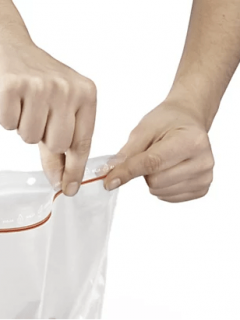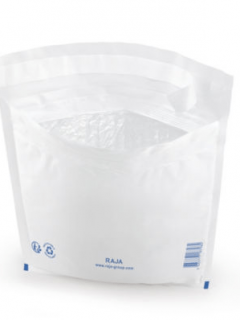What will the overall balance look like for the e-commerce market after Christmas and the winter sales? Many companies will also analyse customer returns. After Christmas in the US, returns will reach a market value of up to $90 billion this year. For some product categories, up to one in two items will be returned!
The aim of this article is to provide guidance on how to improve the logistics of returns, which is a legal requirement throughout Europe. To do so, we asked for some advice from a Returns Logistics Expert and the Director of Logistics and Transport of an e-commerce site leading in its industry.
I. Support the customer when returning an order
You don’t have to fight this trend, ensure that your customers have a positive impression of you at this strategic moment, which can determine whether they will return to buy from your e-store.
II. How to improve the return rate?
It is possible to reduce the number of returns. We have selected some advice from the experts.
III. Can we calculate the ROI of proactive return logistics?
Read the advice of Eddy Richauvet, an expert in returns logistics and co-founder of ShopRunBack, an automated returns management solution that has won numerous awards at logistics, e-commerce and innovation fairs. In 2017, the company handled one million returns across Europe.
Some data on online user behaviour
- More than 60% of internet users check the return policy before purchasing.
- Free returns are inevitable (customers are already used to free shipping).
- 90% of consumers are much more likely to buy from e-shops with a simple product return process.
Remember: return is first and foremost a legal obligation
The consumer has 14 days to return a product. “We usually maintain a return rate of between 25 and 50% in B2C,” says Eddy Richauvet, co-founder of ShopRunBack. This figure is proportional to the number of packages shipped. What’s more, the end of the year and the Christmas break equate to an increased number of duplicate orders and impulsive purchases.
“In the same way that logistics has streamlined processes (and continues to optimise them) to ensure a positive customer experience at the point of delivery, it must also strive to provide a streamlined and simple system to handle order returns. This is the best way to loyalise the customer!” advises Benoit Minvielle, e-commerce director of the RAJA Group.
I. Increase customer comfort when returning a product
Practical tip: you can prevent damage to goods returning to stock by preventing consumers from returning goods in haphazard packaging that does not offer sufficient protection. Use the following tips.
- Prepare packaging robust enough to withstand round-trip transportation
It is no secret that the increase in returns is one of the reasons for the increase in sales of 3- and 5-ply corrugated cardboard boxes observed by the RAJA Group throughout Europe.
- Test your return packaging
The carton is not everything. It is unlikely that a package sealed with old or poor-quality adhesive tape will return intact. Return packaging with a double adhesive tape strip allows the consumer to use the same packaging to return products.
Alternative: Mango.com ships its orders in a box. There is a pocket inside for the eventual return of the goods.
“While offering solutions to facilitate the packaging of parcels, we also recommend that online retailers test packaging that allows for returns,” recalls Etane Derhy, Key Account Manager Europe, RAJA Group.
II. How do you reduce the return rate?
Because we cannot touch the product, online shopping is more or less risky. Recent data from North America, for example, shows that the average return rate is 8% in retail, 20% in e-commerce and as high as 30% during the festive season.
These figures are dependent on the category of products sold, with all articles of clothing leading the way, of course. The US has a record high return rate of up to 50%. So how do we change this phenomenon?
- Reduce the likelihood of packages being damaged in transit
It is often the main cause of returns and dissatisfaction among online shoppers. Pay attention to customer complaints and protect your products with appropriate packaging.
- How to reduce size problems?
This is one of the key reasons for returns in the clothing industry! Start-ups and large companies are working on this issue in order to come up with the right size-fitting technology that will enable internet users to determine the right size on the first order. The possibilities of augmented reality and mobile technology are worth testing.
In anticipation of revolutionary technology, it is essential to develop an item-specific guide that should be included on product pages.
- Match perceived online quality with actual product quality
Another frequently cited reason for returns is the difference in quality between the online quality and the actual quality of the product. It is essential to focus on high-resolution photos and videos that provide an excellent preview of the product before ordering. Disappointment and the feeling of being cheated are two reasons why a customer will choose a competitor next time.
- Improve the mobile experience
Mobile shopping generates more returns than purchases made via computer. A poor mobile user experience is partly responsible for these returns.
- Track i reject customers who serially return orders
Serial returns is an American term referring to consumers who buy to try or even use products before returning them. They are considered to have no purchase intention at all. According to the National Retail Federation, the increasing number of scammers is an inevitable trend.
III. How to calculate the ROI of reverse logistics?
- Monitor your industry and your customers
We can cite brands that have made their returns policy a lever for competitiveness and loyalty. Not only Amazon, but also the ASOS brand, which, without going outside the UK, has gained a significant market share in continental Europe by introducing a simple and flexible returns policy.
But beyond a hunch or instinct, how do you calculate the profitability of a proactive returns policy?
“Aproactive returns strategy is a gamble! ” says Christophe Leroy, Logistics and Transport Director at Motoblouz.com. Read his advice and consider how to implement or improve your returns policy.
Benchmark with your competitors: Are your direct competitors better? If so, don’t hesitate to order and see the process a customer goes through when returning goods.
Survey customers: ask them about key criteria. What return time would be critical? Are they willing to contribute to the cost when returning certain categories of goods? Which return methods do they prefer: courier, snail mail or home collection?
Tests A / B: If you have an e-commerce site, you can test the attractiveness of your returns policy. Add the information “Free return for up to X days” under the order area (or elsewhere ), this will improve the conversion rate.
- Advice from Eddy Richauvet
The ROI of a returns policy is measured by several factors and associated costs.
Consumer satisfaction: implementation of a proactive or customer-friendly policy, namely:
- Longer return period than the statutory 14 days,
- Payment of the return costs by the seller,
- Choice of return method: via courier, snail mail or home collection,
- Immediate or short refund periods.
Reduction of indirect costs, such as the cost of customer service contact related to questions / process monitoring.
Increase in total revenue: e-tailers, found that the implementation of a flexible returns policy is accompanied by an increase in sales, this is confirmed by their net profit.
In summary, ROI is part of a global approach. A proactive returns policy, a customer-friendly website is linked to extensive marketing activities (communication, PR activities, encouragement to purchase). High-quality after-sales customer service should also not be forgotten.
Image source: unsplash.com, pixabay.com














